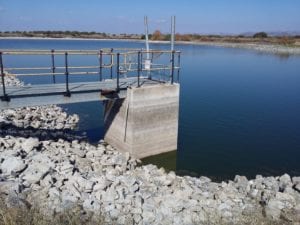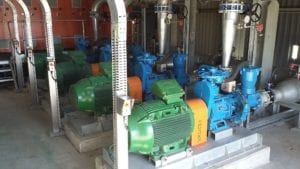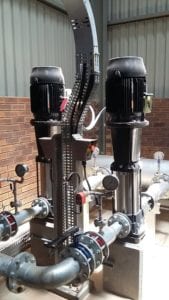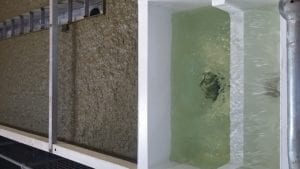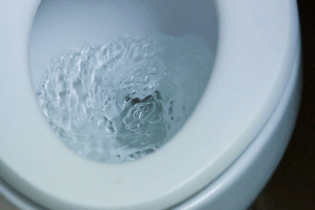Platinum case study
In implementing any wastewater recycling system, mines can look forward to considerable savings. Basson recalls a project he was involved in for the Bafokeng Rasimone Platinum Mine (BRPM) in Boshoek, 30 minutes north-west of Rustenberg. “The engineering consultant performed a preliminary feasibility study and then the project was put out to tender as an International Federation of Consulting Engineers Yellow Book design-and-build contract.” AquaPlan was awarded the tender to execute the full design, build, civils, mechanical, process and electrical work. Construction began in 2014, and in 2015, the plant began operation for an initial three-month trial period.“We were initially contracted to train some of the mine’s own operators. BRPM’s engineering manager, Grant Magano, then asked us to train some of the local community members who were employed during construction. So we took four local people and trained them up to the point where they could operate the plant. Based on that, the mine awarded AquaPlan a two-year operational contract. We now operate the plant in its entirety for the client,” he explains.
Rustenburg is a particularly dry part of the country, so the mine wanted to be able to reuse water from its tailings facility as gland service water. “The new plant treats water pumped from the tailings dam using dissolved air flotation (DAF) technology to remove all the suspended solids and other similar contaminants. From there, it’s transferred to the concentrator plant where it’s used as gland service water,” says Basson. “Previously, the mine had used potable water from Magalies Water for this purpose. By recycling its own wastewater, BRPM’s monthly cash savings on its water utility bill have been astounding. An added benefit is that there is now more potable water available to surrounding communities and industry. There are obviously environmental advantages as well, because the mine is reusing water,” he adds.Site specifics
The BRPM plant has a treatment capacity of up to 4 Mℓ/day. “Currently, we’re running at about 3.2 Mℓ/day or 3.3 Mℓ/day. That’s limited by the existing pipeline only. The plant was built 6.5 km from the tailings plant and uses the existing pipe network. We upgraded the pump station and installed new pumps,” explains Basson. Although the plant is operating below its original design capacity, the limitation arises from site conditions. The mine is looking at installing a new pipeline shortly. “For the plant’s electricity supply, we had to tie in to BRPM’s existing reticulation links. So, we installed an overhead line that linked to its systems,” he adds.Multidisciplinary approach
AquaPlan is a multidisciplinary engineering firm with more than 100 years’ combined practical experience. By combining key project delivery services with manufacturing capabilities, the company is able to provide a cost-effective, quick, accurate and professional offering to its clients. In the case of the BRPM plant, everything was manufactured in-house, with the exception of the air compressors, which were purchased from Kaeser. “We fabricated everything else, including the saturators and pressure vessels,” says Basson. AquaPlan also has extensive experience and capabilities in fabricating medium-term packaged treatment plants. Although mainly rolled out to the municipal market for raw water treatment, these plants can also be configured for mine water treatment, as well as other industrial applications. These plants boast a 20-year expected service life and can be turned around in the factory in six to eight weeks.


